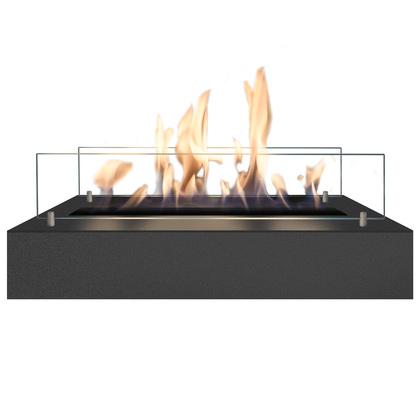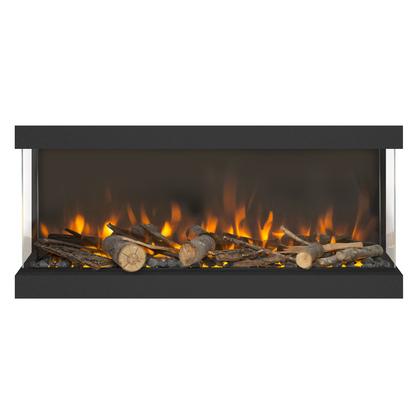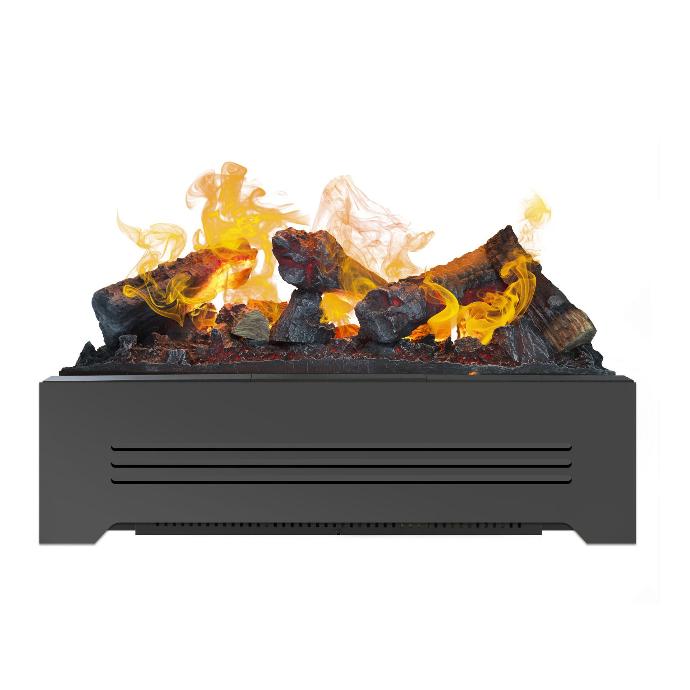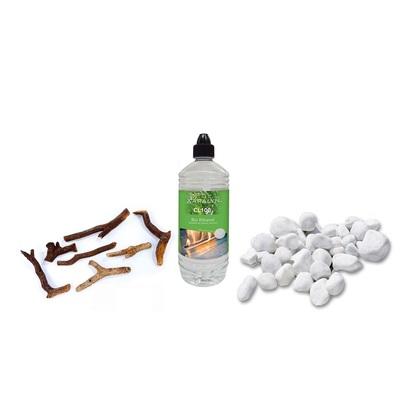What is bioethanol gel (burning gel) and when should you use it?
Within the range of fuels for decorative fireplaces, bioethanol gel, also known as burning gel, is a lesser-known alternative. This gel-based fuel offers specific advantages in terms of ease of use, but also has important limitations. In this article, we explain exactly what burning gel is, how it differs from standard bioethanol, and in which situations it is (or is not) suitable.
What is burning gel?
Burning gel is a gel-like fuel made from bioethanol (alcohol), with thickening agents added to create a viscous texture. The result is a thick, slightly sticky substance that is easy to dose and ignite.
Thanks to its gel structure, burning gel is particularly suitable for small open burners, such as table fireplaces, garden torches or decorative pots — situations where liquid fuel is less practical or safe.
Is burning gel safe to use?
Yes, burning gel is safe to use — especially in simple, open burners or DIY table models. Its thick consistency helps reduce the risk of spilling.
When do you use burning gel?
Burning gel is mainly used in burners that are unsafe to use with liquid bioethanol:
- Simple outdoor decorative fireplaces with open reservoirs
-
Low-cost table models with open containers
Burning gel is only suitable for open burners that do not contain ceramic elements or absorption systems.
Is burning gel suitable for all bioethanol fireplaces?
No. Burning gel is not suitable for all fireplaces. It may only be used in open burners specifically designed for gel fuel.
Never use burning gel in:
- Xaralyn ceramic burners
- Burners with absorption material (such as ceramic wool)
- Closed or regulated combustion systems
Using gel fuel in an incompatible burner can lead to permanent damage, uncontrolled combustion, excessive soot formation, or dangerous situations.
What is the difference between burning gel and liquid bio-ethanol?
| Feature | Burning gel | Liquid bioethanol |
|---|---|---|
| Texture | Gel-like, thick | Liquid |
| Usage | Only in open, basic burners | In both open and closed systems |
| Spill safety | Low chance of spills | Higher risk of leakage |
| Flame appearance | Sometimes crackling, variable | Calm and consistent |
| Soot formation | Present | Minimal with full combustion |
| Odour | Stronger due to additives | Neutral to mildly alcoholic |
| Efficiency | Lower | Higher |
| Indoor use | Not recommended | Suitable |
What’s the difference between burning gel and lamp oil?
- Burning gel is based on bioethanol, a renewable, plant-based alcohol fuel.
- Lamp oil is a fossil-based petroleum product, generally intended for oil lamps or outdoor torches.
Both are flammable, but they differ greatly in composition, odour, safety, and environmental impact. Burning gel is relatively cleaner and safer than lamp oil but less efficient than pure bio-ethanol.
Advantages of burning gel
- Ease of use – Thick gel is easy to portion and less likely to spill.
- Suitable for small-scale applications – Ideal for decorative outdoor burners with open containers.
Disadvantages and considerations
- Less efficient combustion – Additives make it burn less cleanly than pure bioethanol.
- Soot and smell – May leave residue and produce odour.
- Limited compatibility – Only for open burners; not suitable for ceramic or absorption systems.
- Lower energy output – Lower energy yield per litre.
- Cost – Burning gel is often almost twice as expensive per burn hour as liquid bio-ethanol.
Conclusion: when to choose burning gel?
Burning gel is a convenient fuel for specific outdoor or decorative applications, particularly in small open burners. It offers ease of use and ambience but is less efficient, more polluting, and significantly more expensive.
Only use burning gel according to the manufacturer’s instructions and never in closed systems or ceramic burners. For frequent indoor use, liquid bio-ethanol remains the safest, most efficient, and cost-effective choice.
If you plan to use a bioethanol burner more than occasionally, invest in a system with lower fuel consumption.



